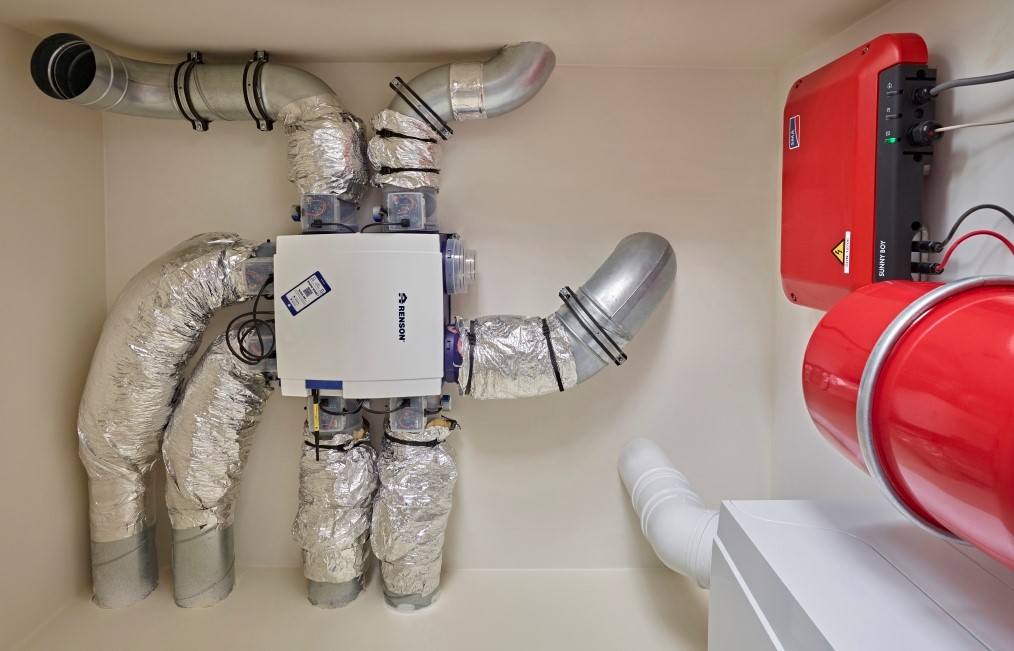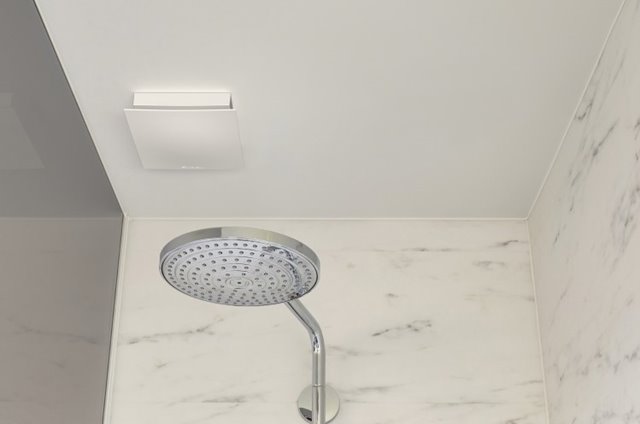Ventilation system maintenance: vital, but often forgotten
Healthy indoor air is essential if you want to live in a healthy home. Opening a window now and then helps, of course, but it doesn’t have any lasting effect. What your home really needs is a structural solution: a properly functioning mechanical ventilation system that extracts polluted air from indoors and automatically replaces it with fresh air from outside. And for ventilation systems to work properly, maintenance is essential. Whether you choose a D-system or the lower maintenance C-system, it will need occasional but regular cleaning to continue functioning as it should.
Ventilation in your home is not an unnecessary luxury
When you think of healthy living, you immediately think of a good diet, exercise, hygiene… but lots of people forget that breathing healthy air also needs to be added to this list. Especially if you know that we spend 90% of our time indoors on average, and that the air in our homes is often five times more polluted than outdoor air. This is because it’s full of CO2, VOCs (volatile organic compounds), moisture… and prolonged exposure to it can cause severe health complaints such as migraines, asthma and even cancer. You can easily avoid this, however, by constantly replenishing your home with fresh air from outside: extracting the polluted indoor air and replacing it with healthy, fresh outdoor air.
The need for structural solutions: installing a ventilation system
It’s a persistent myth that occasionally opening the window for 15 minutes completely remedies the problem. This does of course have a positive effect, but only for a short time. Research has shown that the air quality returns to its previous level just 20 minutes after closing the windows again. And you can easily test this with the Renson Sense, our smart CO2 meter, which visually indicates when the air quality in your home is no longer healthy. The thing that you and your (properly insulated and airtight) home will gain the most benefit from, though, is a structural solution: a ventilation system. Because nobody wants to live in a fully sealed box...
Ventilation solutions for new and renovated homes
There are a number of different ventilation systems available on the market for new-build homes, all of which work in different ways: ventilation systems A, B, C and D. At Renson, we offer systems C and D, because these are the most common ones on the market. We go a step further, however, by adding a ‘+’, because we provide smart, fully automatic, demand-driven ventilation solutions (system C+ and system D+), which only ventilate the required areas when necessary. For the renovation market, we also have the Renson Waves: a smart, decentralised ventilation system, which can easily be connected to existing air ducts.
The importance of a properly functioning mechanical ventilation system
You can sleep more easily if you have a ventilation system... This is generally true, but people sometimes forget that ventilation systems need to be cleaned occasionally in order to keep working properly. A system that is never cleaned will not function optimally, so your home won’t be filled with healthy air at all times.
System C+ supplies fresh air in a natural way via window ventilation systems, such as Invisivent Air or Invisivent Comfort, above windows in so-called ‘dry’ rooms (living room, bedroom…). At the same time, polluted indoor air is mechanically extracted via the Healthbox 3.0, our smart ventilation unit.
The C+ system requires less maintenance than the D+ system, because this ventilation unit does not contain any filters which need to be replaced regularly. Dirt and dust can accumulate in the window ventilation system, air ducts and extractor fans in the room. The vents and louvres should therefore be checked at least once a year, and the air ducts every 5 years.

Ventilation system D+ mechanically regulates the supply of fresh air and the extraction of polluted air into the home. It is a so-called Mechanical Ventilation Heat Recovery (MVHR) system. The heart of this system is a heat exchanger that extracts heat from indoor air being exhausted from the house in order to heat freshly supplied (cooler) air as it enters the home.
The system contains filters that retain much of the (fine) dust and pollen in the air. The time it takes for your filter to become saturated depends on the type of filter you have and the amount of pollution there is where you live. Replacing the filters on a regular bass is the foundation of proper maintenance of any D system. This ensures no unnecessary contamination will foul the relatively sensitive heat exchanger. This maintains efficiency and energy consumption.
.jpg)
Air ducts also need regular cleaning. The diameter of the ducts will reduce as dirt builds up in them, this will require more effort from your system in order to achieve the same results. The maintenance to be carried out is shown in the table below:
| Part | Action | Frequency | |||
| M | 3M | Y | 3Y | ||
| Filters | Visual inspection | • | |||
| Vacuum | • | ||||
| Replace | • | ||||
| Valves | Inspection | • | |||
| Cleaning | • | ||||
| Condensate drain | Check | • | |||
| Fans | Visual inspection | • | |||
| Cleaning | • | ||||
| Heat exchanger | Visual inspection | • | |||
| Cleaning | • | ||||
| Air ducts | Cleaning (bacteriological) | • | |||
If you are renovating an existing home, and decide to put in a new bathroom, kitchen or toilet, you might not want to install a central ventilation system. Your home has already been recently refurbished, so any more building or demolition work is undoubtedly not an option.
And this is exactly why we’ve developed Renson Waves – a decentralised extraction ventilator that connects to existing air ducts in the extraction area. Just like the C+ system, Waves is a ‘smart’ system which will only extract polluted air when necessary, so when the sensors detect moisture, CO2 or VOCs. Another bonus is that Waves is very low maintenance, just like the C+ system. We recommend cleaning the air ducts every five years.

